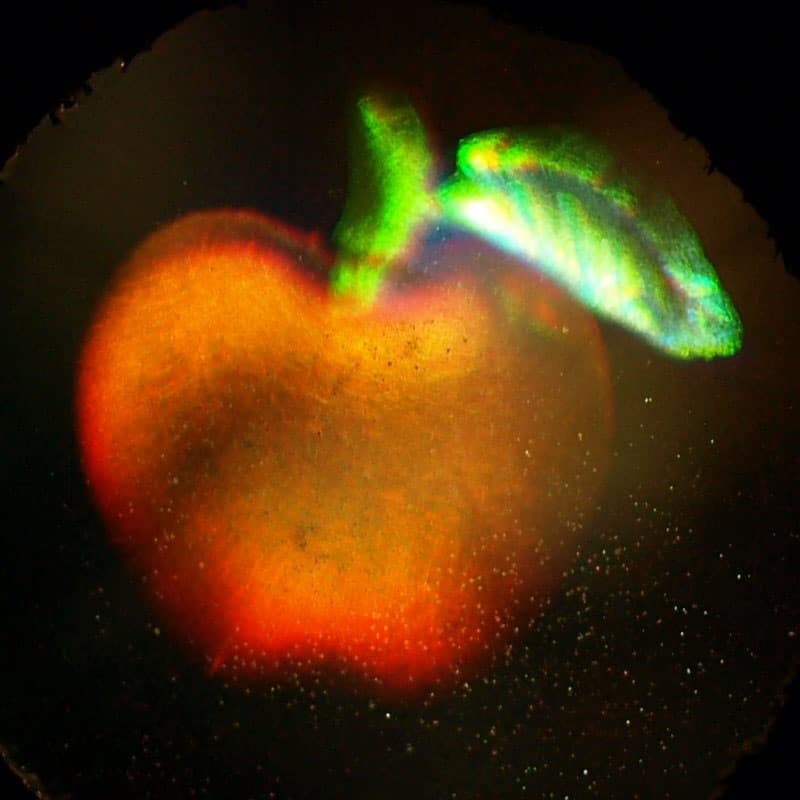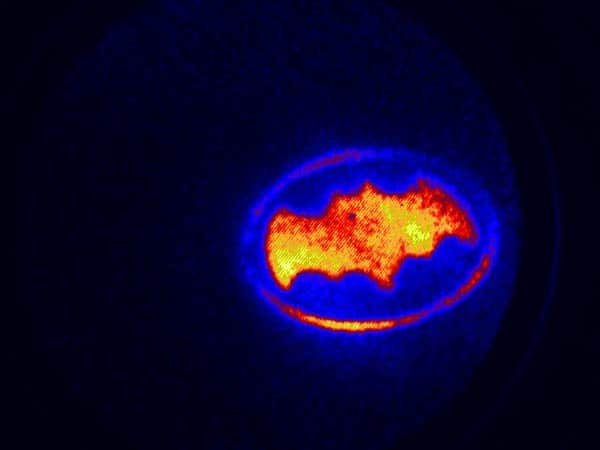Much as we enjoy reporting the complex and intriguing advances made in physics each year, we do love an interesting picture to go with it. Here are 12 of our favourite images of 2011, in no particular order. These range from the beautiful and historical to pictures that show how science affects the world we live in. We hope you enjoy them

Nature’s building blocks brought to life
No, it is not a piece of modern art, though it would not be a stretch of the imagination to see these colourful images up on your wall. These figures are part of a new project to create a periodic table of shapes that could become a useful resource for mathematicians and theoretical physicists. It is a collection of shapes across three, four and five dimensions that cannot be broken down into simpler shapes. Researchers find these basic building blocks of the universe, known as “Fano varieties”, by looking for solutions to string theory, which assumes that in addition to space and time there are other hidden dimensions.
The Scholar and the Caliph
It is not often that comic-book-like illustrations appear in Physics World, but this story really leant itself to them. This panel is one of three that features in a fictional re-imagining of a 10-year period in the life of the medieval Muslim polymath Ibn al-Haytham (AD 965–1040), who is considered by many historians to be the father of modern optics. This year marks the millennial celebration of his magnum opus Kitab al-Manazir (Book of Optics).
Tiny water hammers bash blades
This colour-enhanced image shows a droplet of water being deposited on a “superhydrophobic” silicon surface. A pressure wave is beginning to pass through the drop. Pressure waves move through individual water droplets as they land on a surface, sending a shock wave of sorts through the drop that cause it to wobble and become deformed. While this is quite like the “water hammer” effect that is normally thought of as a plumbing nuisance, researchers in the US say that it might explain how water droplets penetrate surfaces.
Japan quake triggers nuclear rethink
The number 3 nuclear reactor of the Fukushima Daiichi nuclear plant is seen burning in this satellite image taken on 14 March. Reactors 1–4 can be seen from bottom to top. The catastrophe followed the 8.9 magnitude earthquake (on the Richter scale) and subsequent tsunami that struck Japan earlier this year, leaving thousands dead and causing significant damage to the nation’s infrastructure. Japanese authorities deemed the emergency at Fukushima to be level 7 on the International Nuclear Event Scale (INES) – at the maximum. The crisis caused governments around the globe to review their own nuclear programmes.
Relativity’s new revolution
We liked this graphic of two interacting black hole so much that we put it on the cover of the October issue of Physics World. The image is that of a simulation of two black holes grazing past each other and emitting gravitational waves. Rogue black holes kicked from their galactic lairs are among the surprising predictions made by physicists using powerful computers to solve Einstein’s equations of general relativity to understand more about these dancing black holes.
Einstein’s landing card resurfaces after 80 years
This unremarkable piece of paper belongs to a crucial chapter in one of the most extraordinary lives of the 20th century. It is the landing card issued to one Albert Einstein when he arrived in Britain in 1933 after fleeing Nazi Germany. The card went on public display for the first time in May this year, at the Merseyside Maritime Museum in Liverpool, after having been stored for nearly 80 years at Heathrow Airport. It is interesting to note that Einstein lists his nationality as Swiss, having renounced his German citizenship only weeks earlier in angry reaction to Nazi policies.
Fire at US underground lab
The action shot above might look like something out of a Hollywood movie, but in reality it is an image of firefighters sending foam and water down a mine access shaft after a fire broke out at the Soudan Underground Laboratory in March this year. The facility is home to a number of high-profile physics experiments, including the MINOS neutrino detector and the detector of the Cryogenic Dark Matter Search (CDMS) experiment. While some of the foam did enter the main lab, the electronics of the CDMS detector remained unscathed and the lab is now up and running once more.
Holography sharpens up
This tasty-looking apple is not the latest ad campaign from the eponymous computer maker. This is an image of a new type of hologram developed by researchers in Japan, who have managed to depict true colours in holograms that do not change with viewing angle, as happens with most current holograms. Their technique exploits tiny vibrations in metallic surfaces known as “surface plasmons”.
Atlantis lifts off into history
Set to become an iconic image in years to come, above is a picture of NASA’s shuttle Atlantis, taken shortly after the rotating service structure was rolled back at Launch Pad 39A at the Kennedy Space Centre in Florida this July. Marking the last and final flight of the Space Shuttle programme – STS-135 – Atlantis and a four-person crew went on a 12-day mission to deliver more than 3.5 tonnes of supplies to the International Space Station (ISS), which should keep the station stocked for a year.
Magnetic Mecca
This strikingly beautiful image – called Magnetism 1 and created by the Saudi artist Ahmed Mater – caught our eye in July, when an exhibition called “Hajj journey to the heart of Islam” came to the British Museum in London. The photograph – representing the iconic scene of hundreds of thousands of hajj pilgrims circling the Ka’bah in Mecca, Saudi Arabia – is that of a bar magnet surrounded by iron filings. It will be familiar to anyone who has studied magnetism at school but also captures the essence of the Ka’bah circumambulatory.
Starry starry night
While at first glance this image might look like a typical Hubble picture, we at physicsworld.com are especially fond of it. That is because it was taken by amateur astrophotographer Alex Cherney. His prize for winning a major astrophotography competition was an hour using one of the largest optical telescope on the planet – the 10.4 m Gran Telescopio Canarias (GranTeCan), in the Canary Islands in Spain – plus the opportunity to attend and mingle with a “who’s who” of astronomy at the STARMUS festival, an astronomy event held in the Canary Islands in June. After much deliberation, Cherney decided to use his hour to observe and photograph Arp84 (above), a pair of interacting galaxies – NGC5394 and NGC5395.
Batman appears in the cold
Batman motifs do not normally appear in physics journals, so this image really got our attention when it appeared in a Nature paper in August. It is a product of a new source of cold electrons that can image tiny structures at atomic-length scales. The source, which makes use of ultracold atoms, can deliver intense and coherent electron pulses with specific shapes – including the iconic Batman figure above.














